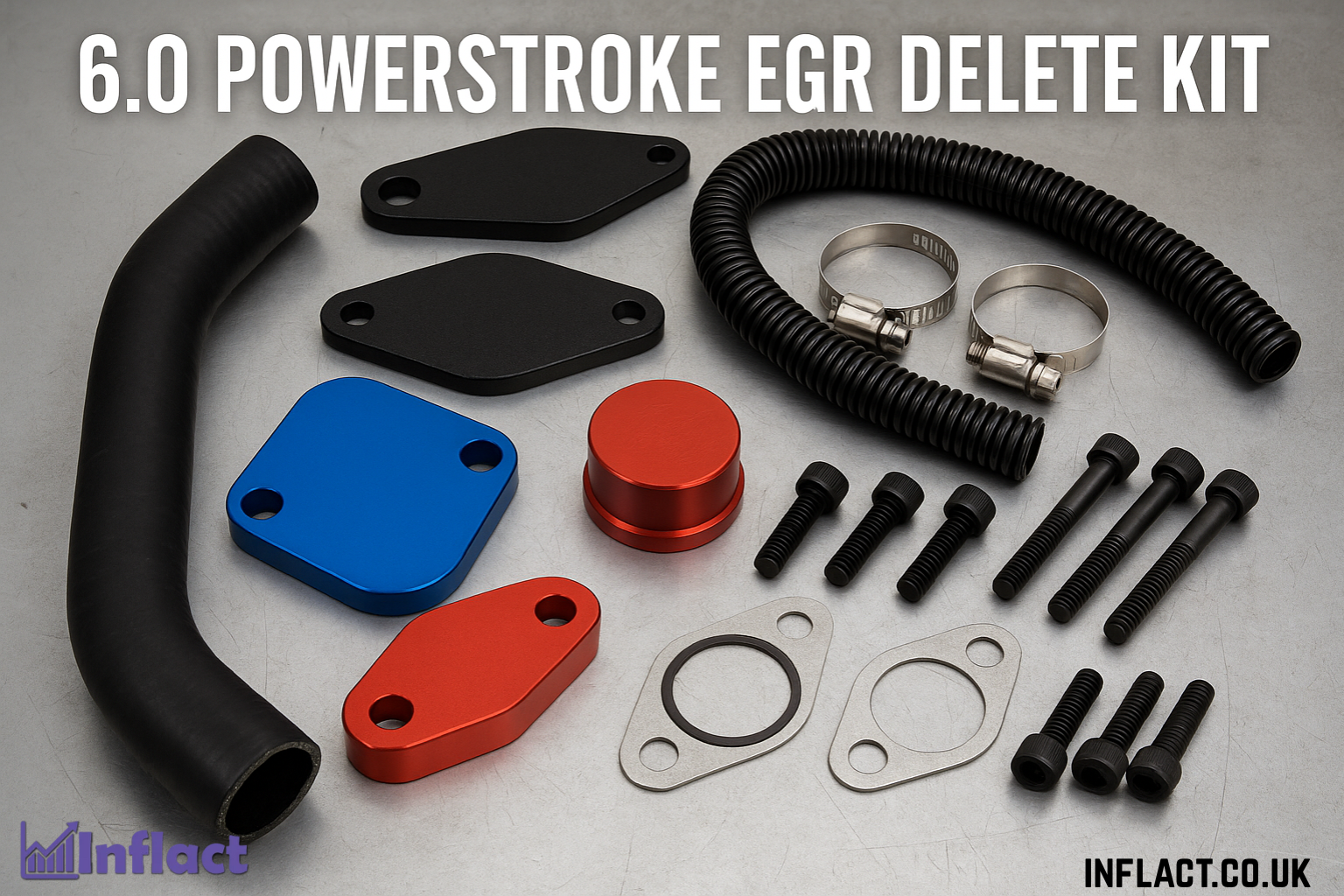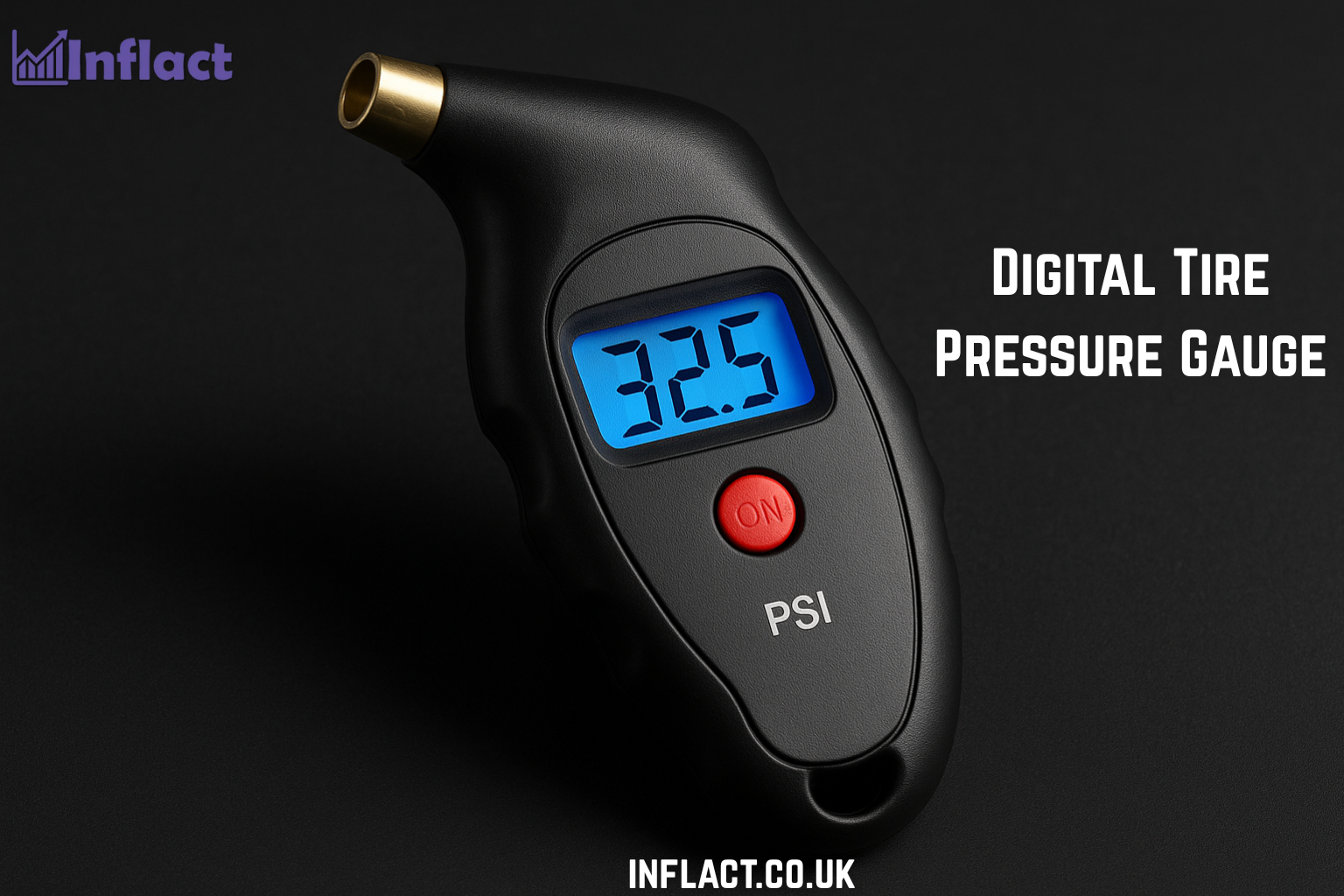Introduction
The 6.0 Powerstroke diesel engine, used in Ford Super Duty trucks from 2003–2007, is a powerful and popular choice among truck owners. However, it has a well-known Achilles’ heel — the EGR (Exhaust Gas Recirculation) system. Over time, the EGR system can clog, leak, and even cause catastrophic engine damage.
To address these issues, many owners turn to a 6.0 Powerstroke EGR delete kit. This upgrade removes or bypasses the problematic EGR components, improving reliability and longevity. In this guide, we’ll explain what an EGR delete kit is, why it’s used, its benefits and drawbacks, and how to install it properly.
What Is an EGR Delete Kit?
Understanding the EGR System and Its Problems
The EGR system is designed to recirculate exhaust gases back into the engine’s intake to reduce nitrogen oxide (NOx) emissions. While effective at reducing emissions, this process introduces soot and heat, which over time:
- Clog the EGR cooler and valve.
- Cause overheating and blown head gaskets.
- Lead to costly repairs.
An EGR delete kit includes parts that remove or block the EGR cooler and valve, stopping exhaust gases from re-entering the intake. Typical components include:
- Block-off plates.
- Coolant reroute hoses or plugs.
- Optional replacement up-pipes or hardware.
- Installation instructions.
Also Read: Automotive Electrical Repair: A Comprehensive Guide for Car Owners and Technicians
Why Do People Install an EGR Delete Kit?
Benefits of Deleting the EGR on a 6.0 Powerstroke
Improved Engine Reliability
Eliminating the EGR system removes one of the most failure-prone components of the 6.0 Powerstroke, reducing the risk of coolant leaks, clogs, and overheating.
Lower Operating Temperatures
Without hot exhaust gases entering the intake, the engine runs cooler, protecting head gaskets and other components.
Cleaner Intake System
Blocking the EGR keeps soot and carbon out of the intake manifold, promoting better airflow and efficiency.
Potential Power Gains
Some owners report sharper throttle response and a modest increase in horsepower, though results vary.
Legal and Environmental Considerations
Know the Laws Before You Delete
While deleting the EGR has clear benefits, it’s important to note:
- In the U.S. and many other countries, removing emissions equipment from vehicles used on public roads is illegal under environmental laws.
- Trucks with deleted EGR systems may fail state inspections and emissions testing.
- Deleting the EGR increases NOx emissions, which harm air quality.
Most truck owners install EGR delete kits on vehicles used off-road, for towing on private property, or for competition purposes. Always check your local regulations before proceeding.
Step-by-Step Guide: Installing a 6.0 Powerstroke EGR Delete Kit
Tools and Preparation
You’ll need:
- Socket and wrench set
- Torque wrench
- Coolant drain pan
- Screwdrivers
- Replacement coolant
- Protective gloves and eye protection
Step 1: Prepare the Vehicle
- Park on a level surface and let the engine cool completely.
- Disconnect the batteries to prevent electrical shorts.
- Drain the coolant into a clean container.
Step 2: Remove Existing Components
- Remove the air intake, intake manifold, turbocharger (if required), and EGR cooler.
- Disconnect and remove the EGR valve.
Step 3: Install the Delete Kit
- Install block-off plates where the EGR cooler and valve were located.
- Reroute or cap off coolant lines as specified in your kit.
- Reinstall the turbocharger and intake components.
Step 4: Refill and Test
- Refill the coolant.
- Reconnect the batteries.
- Start the engine and check for leaks or warning lights.
- Monitor engine temperature during a short test drive.
Pro Tip: Many owners pair the EGR delete with an oil cooler upgrade and ARP head studs for maximum durability.
Pros and Cons of an EGR Delete Kit
Advantages
- Increased reliability and durability.
- Cooler engine operation.
- Cleaner intake system.
- Possible improvement in performance.
Disadvantages
- Illegal for on-road use in most areas.
- May void any remaining warranty.
- Can cause higher NOx emissions.
- Requires tuning to avoid engine codes.
Also Read: 2 and 5/16 Ball Hitch: A Complete Guide for Safe and Secure Heavy-Duty Towing
Conclusion
For many 6.0 Powerstroke owners, installing an EGR delete kit is a practical solution to the engine’s most common problems. It improves reliability, lowers temperatures, and keeps the intake cleaner — ensuring your truck can handle heavy-duty tasks without frequent repairs.
However, it’s crucial to weigh the benefits against the legal and environmental consequences. If you choose to proceed, use a quality kit, follow instructions carefully, and consider professional installation if needed.
If you’re serious about maintaining your truck’s longevity and performance — and you understand the legal implications — an EGR delete kit can be a valuable upgrade.
FAQs About 6.0 Powerstroke EGR Delete Kits
1. Will deleting the EGR damage my engine?
No — if installed properly, deleting the EGR can actually improve engine reliability by eliminating a common failure point.
2. Do I need to tune my truck after deleting the EGR?
Yes — deleting the EGR often triggers engine codes and check engine lights. A tuner or programmer can disable these codes and optimize performance.
3. Is an EGR delete legal?
On vehicles driven on public roads, EGR deletes are typically illegal under emissions laws. They are intended for off-road or competition use.
4. Can I install an EGR delete kit myself?
If you’re mechanically skilled and have the right tools, it’s a doable DIY project. Otherwise, professional installation is recommended.
5. Will my truck pass emissions after an EGR delete?
In most areas, no. Removing the EGR system increases emissions and can cause your truck to fail inspection.




